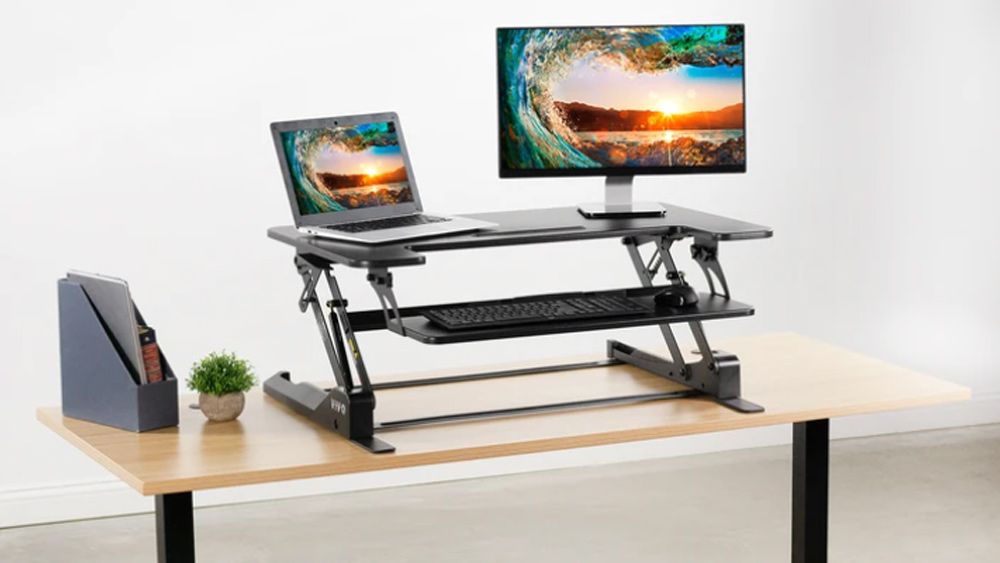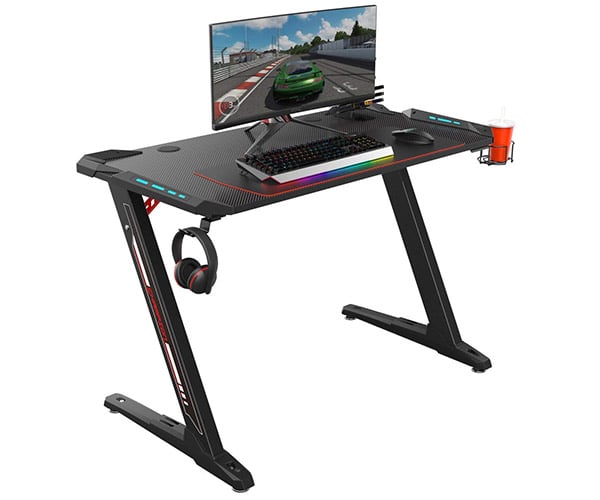
We also referenced the work of Cornell University's Human Factors and Ergonomics Research Group ( CUErgo) for this guide and the guide to our home office work. We spoke at length with Shane Harris, one of the first journalists to write extensively about standing desks. We've read the work of James Levine of the Mayo Clinic, a pioneer and early advocate for varying one's work position. Over the years of testing standing desks, we've consulted the work of experts in ergonomics and productivity. In 2019, we expanded our testing and recommendations for converters and brought them into their own guide. We had tested a half-dozen desktop-mounted converters over those five years. Wirecutter has been testing and recommending adjustable standing desks since 2013. It's also the quietest, easiest to adjust, and best-looking laptop riser we tested. But it also works great with a laptop on a stand, a small keyboard, and a small mouse, making your sitting and standing angles ergonomically better, if not ideal. Using your laptop alone whether sitting or standing isn't a great ergonomic setup, and the Cora cannot fit a monitor. If you only use your laptop to work and want to start standing, the Cora gives you a lower-cost, less-permanent way to do so. It weighs nearly 100 pounds and takes up 26 inches of desk depth (nearly 40 with an overhanging keyboard tray), but it's quicker and quieter than other electric converters we tested, looks better than most converters with a bamboo or rubberwood desktop options, and lets you use either a lowered keyboard tray or a flat work surface. If you've got a sizable desk to dedicate to standing (that you don't want to trade out), and you know you won't need to switch out your setup for other work, the E7 by Uplift gives you the most convenient standing setup short of buying a standing desk. It's smooth to raise and lower, it rises mostly straight up instead of lurching out like many converters, and it has some built-in cable routing that make it easier to create a good monitor setup. It's more stable than many other two-tier converters, especially its keyboard tray. If you don't have a monitor you can mount to a VESA bracket or you want to use your laptop screen but still stand at your work, the VertDesk Standing Desk Converter is the best fallback option, and we mean that as a compliment.
#Fully cora standing desk converter pro#
The Kangaroo Pro Junior makes you do a little bit more work than some converters-turning knobs and gently lifting with your hands-but that pays off in ergonomically superior arm and neck angles. And because you work on a flat, deep surface, rather than a narrow tray, you can use whatever combination of keyboard, mouse, and other tools best fits your work. The monitor mount means your display is more stable and takes up less room than a monitor standing on a platform. Being able to control the height of your monitor and keyboard tray separately makes the Kangaroo Pro Junior a better fit for more people.


That's no small feat for this category, believe us.

The Ergo Desktop Kangaroo Pro Junior makes the fewest ergonomic compromises of the converters we've tested without being too annoying to use. After building, testing, and comparing 15 standing desk converters, we found our pick of more than five years offers the most stable, ergonomic, and adjustable standing setup while taking up less room than most converters.Īll standing desk converters are an inherent compromise, an attempt to make one part of your non-moving desk move for your work. If you want to incorporate standing into your work routine but a full-sized adjustable standing desk isn't an option, the Kangaroo Pro Junior is the next best thing.
#Fully cora standing desk converter full#
Read the full guide to standing desk converters.

When readers choose to buy Wirecutter's independently chosen editorial picks, Wirecutter and Engadget may earn affiliate commission. This post was done in partnership with Wirecutter.


 0 kommentar(er)
0 kommentar(er)
